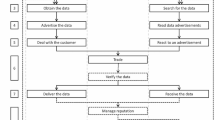Abstract
This article addresses the question of whether personal surveillance on the world wide web is different in nature and intensity from that in the offline world. The article presents a profile of the ways in which privacy problems were framed and addressed in the 1970s and 1990s. Based on an analysis of privacy news stories from 1999–2000, it then presents a typology of the kinds of surveillance practices that have emerged as a result of Internet communications. Five practices are discussed and illustrated: surveillance by glitch, surveillance by default, surveillance by design, surveillance by possession, and surveillance by subject. The article offers some tentative conclusions about the progressive latency of tracking devices, about the complexity created by multi-sourcing, about the robustness of clickstream data, and about the erosion of the distinction between the monitor and the monitored. These trends emphasize the need to reject analysis that frames our understanding of Internet surveillance in terms of its “impact” on society. Rather the Internet should be regarded as a “form of life” whose evolving structure becomes embedded in human consciousness and social practice, and whose architecture embodies an inherent valence that is gradually shifting away from the assumptions of anonymity upon which the Internet was originally designed.
Similar content being viewed by others
References
Colin J. Bennett. Computers, Personal Data and Theories of Technology: Comparative Approaches to Privacy Protection in the 1990s. Science, Technology and Human Values, 16: 51–69, 1999.
Tim Berners-Lee. Weaving the Web: The Original Design and Ultimate Destiny of the World Wide Web. San Francisco: Harper, 1999.
Ann Cavoukian and Don Tapscott. Who Knows: Safeguarding your Privacy in a Networked World. Toronto: Random House, 1995.
Roger Clarke. Information Technology and Dataveillance. Communications of the ACM, 31 (5): 498–512, 1998.
Christopher Dandeker. Surveillance, Power and Modernity: Bureaucracy and Discipline from 1700 to the Present Day. Cambridge: Polity Press, 1990.
Michel Foucault. The Subject and Power. In H. Dreyfus and P. Rabinow, editors, Michel Foucault: Beyond Structuralism and Hermeneutics. Chicago: Chicago University Press, 1983.
Simson Garfinkel. Database Nation: The Death of Privacy in the 21st Century. Sebastopol Ca: O'Reilly, 2000.
Tim Jordan. Cyberpower: The Culture and Politics of Cyberspace and the Internet. London: Routledge, 1999.
Lawrence Lessig. Code and Other Laws of Cyberspace. New York: Basic Books, 1999.
David Lyon. The Electronic Eye: The Rise of Surveillance Society. Minneapolis: University of Minnesota Press, 1994.
Gary T. Marx. UnderCover: Police Surveillance in America. Berkeley: University of California Press, 1988.
Ithiel de Sola Pool. Technologies of Freedom: On Free Speech in the Electronic Age. Cambridge: Harvard University Press, 1983.
Joel R. Reidenberg. Resolving Conflicting International Data Privacy Rules in Cyberspace. Stanford Law Review, 52 (5): 1315–1371, 2000.
Joel R. Reidenberg. Lex Informatica: The Formulation of Information Policy Rules through Technology. Texas Law Review, 76 (3): 552–593, 1998.
Marc Rotenberg. Fair Information Practices and the Architecture of Privacy (What Larry Doesn't Get). Stanford Technology Law Review, 2001.
Paul Schwartz. Privacy and Democracy in Cyberspace. Vanderbilt Law Review, 52 (6): 1610–1702, 1999.
Andrew L. Shapiro. The Control Revolution. New York: Century Foundation, 1999.
Richard Smith. Gadgets that Spy. Presentation to the 2001 Computers, Freedom and Privacy conference, Cambridge, MA.
David J. Todd. Politicizing Privacy: Focussing Events and the Dynamics of Conflict. MA Thesis, Department of Political Science, University of Victoria, 2001.
Malcolm Warner and Michael Stone. The Databank Society: Organizations, Computers, and Social Freedom. London: Allen & Unwin, 1970.
Alan F. Westin and Michael Baker. Databanks in a Free Society: Computers, Record-Keeping, and Privacy. New York: Quadrangle Books, 1972.
Alan F. Westin. Introduction. In Donald A. Marchand, editor, The Politics of Privacy, Computers and Criminal Justice Records. Arlington Va: Information Resources Press, 1980.
Langdon Winner. Autonomous Technology: Technics-out-of-Control as a Theme in Political Thought. Cambridge: MIT Press, 1977.
Langdon Winner. The Whale and the Reactor: A Search for Limits in the Age of High Technology. Chicago: University of Chicago Press, 1988.
Author information
Authors and Affiliations
Rights and permissions
About this article
Cite this article
Bennett, C.J. Cookies, web bugs, webcams and cue cats: Patterns of surveillance on the world wide web. Ethics and Information Technology 3, 195–208 (2001). https://doi.org/10.1023/A:1012235815384
Published:
Issue Date:
DOI: https://doi.org/10.1023/A:1012235815384




